Before 1992, the area of Genoa ’s Old Port was very different from how we know it today. With the growth of port traffic after World War II, the structures of what had been (and continues to be to this day) one of the world’s major ports for centuries had become inadequate: so ships began to move to the western area of Genoa’s harbor. As a result, the structures of the old harbor began to be abandoned and face decay. For those who visited this area of Genoa until at least the 1970s or 1980s, they would not have found it so different from the way Fabrizio De Andrè described the city’s oldest heart in his song La città vecchia.
On the occasion of the five-hundredth anniversary of the discovery of America, in 1992, Genoa was assigned the organization of anInternational Expo dedicated precisely to the theme of the sea. And it was for this occasion that it was decided to give the city a new face, starting precisely from the Old Port. The task of proceeding with the rearrangement of the entire area was entrusted, in 1984, to the architect Renzo Piano: after discarding the hypothesis of creating an area for the Expo outside the city center, it was thought that, for the city, the best solution was precisely that of recovering the most important area of ancient Genoa: that which, for centuries, connected it to the sea. But it was also thought to create facilities that would not exhaust their functions with the end of the 1992 Expo: with foresight, in fact, a series of interventions were thought to ensure that the Old Port would be converted into a cultural center and commercial area.
 |
| The map of Expo 1992 |
After the Bureau International des Expositions, the organization that manages and organizes universal and international expositions, officially assigned an Expo to Genoa in 1986 to be held in 1992, plans could finally get under way. The first intervention was the demolition of the wall dividing the port area from the city: until 1992, in fact, Genoese in the historic center had no direct contact with the sea. The view of the expanse of water was obstructed by the harbor access wall, and this feeling of remoteness was later increased by the highly criticized construction of the elevated road that runs through the entire area, and at the time further raised the barrier between the city and the sea. With the demolition of the wall, even the Genoese who did not work in the port could return to a relationship with the sea directly in the center of the city.
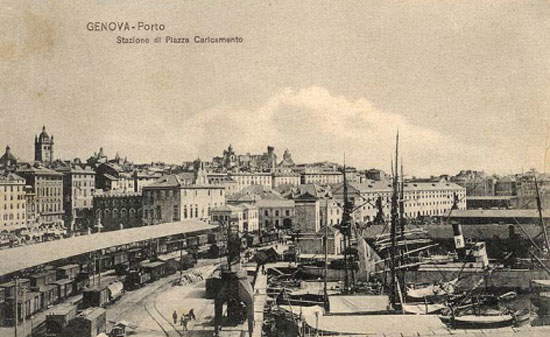 |
| Genoa’s old port in a period photo |
Transformations then concerned the piers: no longer areas for loading and unloading goods, but functional areas to house new services and activities. The Embriaco Bridge became the site of the Piazza delle Feste, a marquee designed to host, precisely, festivals, shows and events: it is particularly striking in winter, when it becomes a large skating rink. Next to the Embriaco Bridge, Renzo Piano built what is probably the symbol of the new Old Port, the Bigo, a structure that serves a dual function: decorative and structural. In aesthetics, it is ideally related to the bigo (hence the name), that is, the crane for loading and unloading goods on ships, and on a functional level it has the task of supporting the tarpaulins of the Piazza delle Feste. Apanoramic elevator was also connected to one of the arms of the Bigo to enable the public to have a bird’s eye view of the harbor and the city. Major transformations then concerned the Ponte Spinola, where the world-famous Aquarium of Genoa was built, opened just for the 1992 Expo and still one of the largest and most important in the world. The Nave Italia, which housed the Italy Pavilion during the Expo and which today is an integral part of the Aquarium’s itinerary, and theIsola delle Chiatte, a sort of floating wooden square, were then connected to the Bridge: it is one of the most fascinating places in the Old Port, and from here there is a beautiful view of almost the entire old part of Genoa.
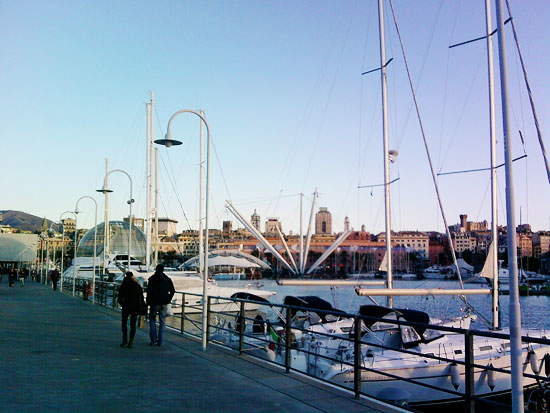 |
| The Old Port of Genoa today, as seen from the Spinola Bridge |
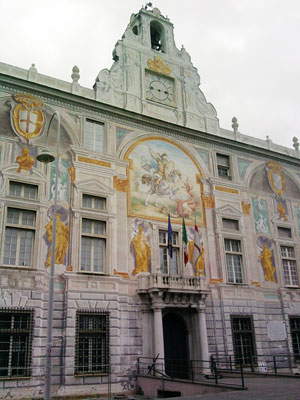 |
| The facade of Palazzo San Giorgio |
In general, however, it was all of Genoa that was affected by a marked renewal that was, first and foremost, cultural. The Carlo Felice Theater had recently reopened to the public: reconstruction work on the building, after its destruction during World War II bombings, had been completed in 1991. The Ducal Palace was renovated and rearranged to be transformed into the city’s main center for art exhibitions, a function it still fulfills today by hosting exhibitions of high caliber: on the occasion of the Expo, it hosted an exhibition on Christopher Columbus. And speaking of exhibitions, 1992 also saw an exhibition on the Genoese Baroque set up in the rooms of the National Gallery of Palazzo Spinola. Palazzo San Giorgio was also restored, which became, a few years later, the headquarters of the port authority. Genoa was preparing, in short, to become one of the Italian capitals of culture. Indeed: in 2004 it was even awarded the title of European Capital of Culture. In spite of the fact that the 1992 Expo failed to achieve its goals, because the overall number of visitors was much smaller than the organizers had expected, Genoa actually became a city projected into modernity. We consider it one of the major art cities of Italy and Europe, a city with a strong cultural vocation, unique and beautiful. And it is also for these aspects that it is one of our favorite cities!
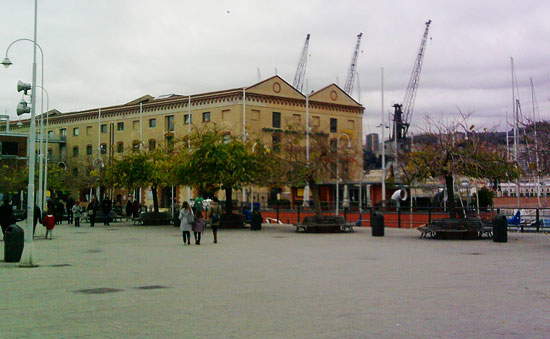 |
| The Cotton Warehouses |
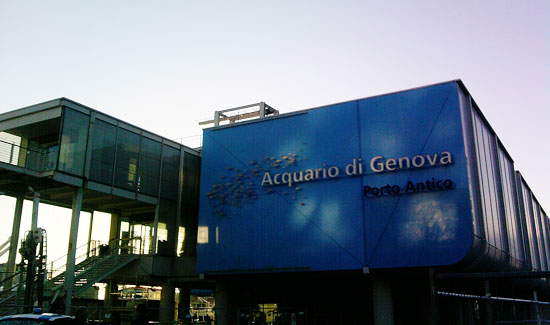 |
| The Aquarium of Genoa |
 |
| The Bigo |
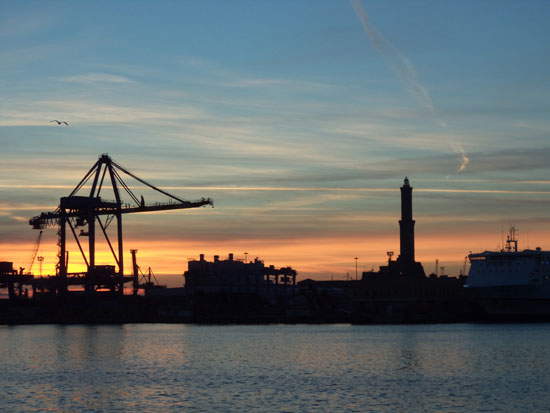 |
| A stunning sunset over the port of Genoa/td>. |
Warning: the translation into English of the original Italian article was created using automatic tools. We undertake to review all articles, but we do not guarantee the total absence of inaccuracies in the translation due to the program. You can find the original by clicking on the ITA button. If you find any mistake,please contact us.